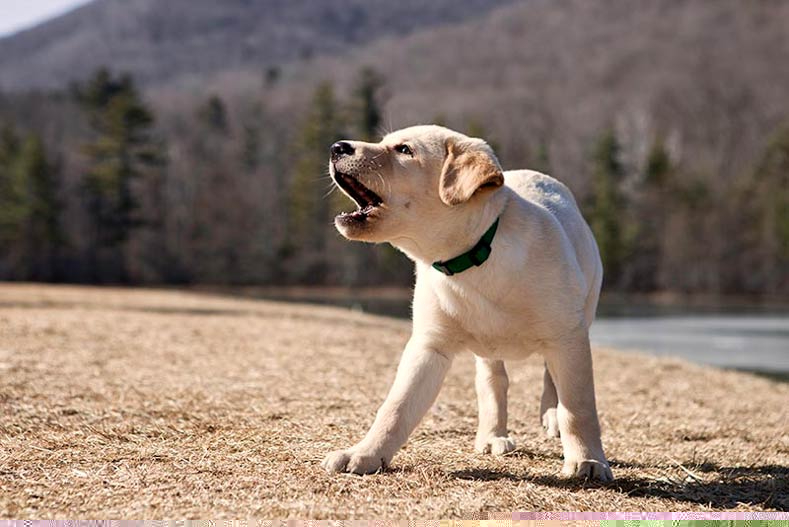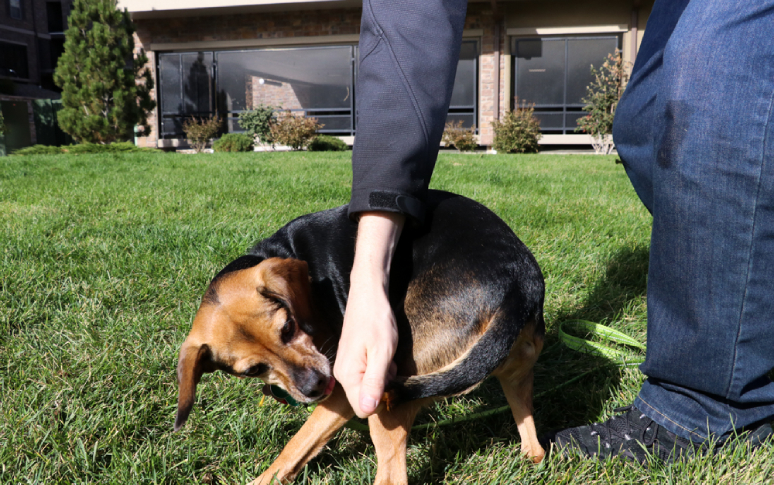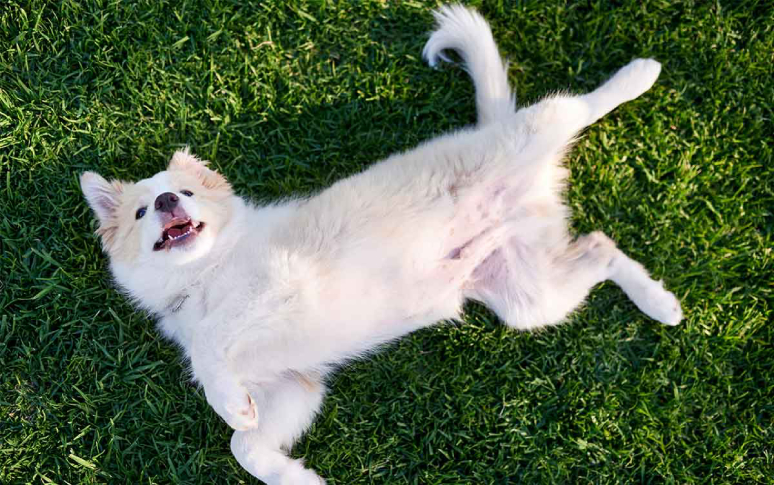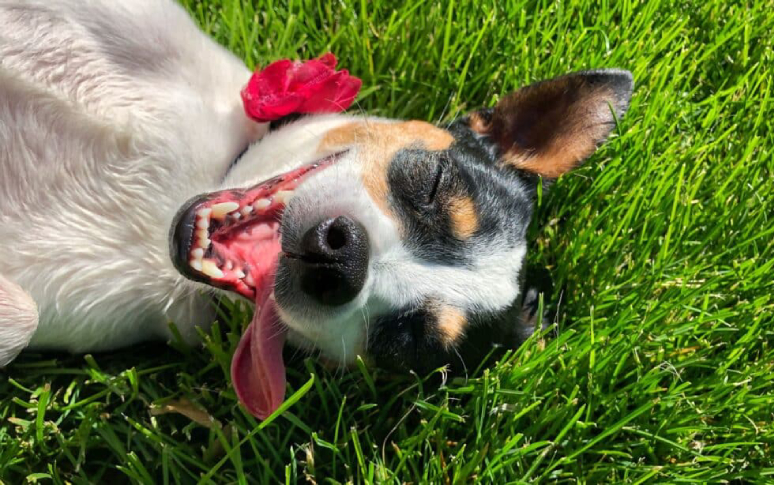1. Shaking Paws
Guide your puppy to greet people with a paw shake. This ranks as one of the most straightforward and charming skills for dogs. Most dogs naturally like using their paws and often raise their paw when asking for a treat.
How to teach your dog to shake paws:
- Introduce "Shake": Ask your dog to sit and give you its undivided attention. Hold a treat in one hand and show it to your dog. Then close your fist over the treat so the dog can't get it. Give your dog the command "shake" and keep its interest by waving your closed fist under its nose. Give them a treat when your dog lifts its paw up, even the slightest. If your pet doesn't naturally lift their paw, you can gently raise it yourself. As you do this, say "shake", then reward them with a treat.
- Phase out the Treat: Once your dog starts offering its paw on command, you can gradually reduce the need to hold the treat in your closed hand. Begin with your hand clasping the treat and issue the "shake" command. As soon as your dog offers its paw, reward it with a treat from your other hand instead of the one holding the treat. Repeat this process multiple times.
In time, as your dog becomes more accustomed to the command, start lessening the treat rewards. Before long, your furry friend will be presenting its paw upon hearing the command, with only a few treats needed to maintain this learned behavior.

2. Quiet and Speak
Teaching your dog to stay quiet and bark only when asked is really important, especially when living in a big city. While techniques may vary among dog trainers and owners, the fundamental approach delineated below has proven effective for a wide range of dogs.
How to teach your dog to be quiet and speak:
- Be quiet: Select a straightforward word for the quiet command. This keyword should be memorable. Optimal selections might be "enough," "quiet," or "hush." Create a situation that will cause your dog to bark. For example, having someone ring the bell or knock on the door. Upon your dog's barking, briefly respond by investigating the source - perhaps glance out the window or door. Then, return to your dog and gain his attention, either by showing him a treat or a toy. Once the barking ceases, reward your dog with the toy or treat. Repeat these steps, gradually extending the periods of silence required each time before presenting the treat. After your dog has successfully remained quiet a few times, introduce the cue word you've selected. Once your dog's barking, assert your quiet command in a firm, clear, and positive tone, all while brandishing the reward. Hand over the reward once the barking stops.
- Speak: Choose one simple word for the bark command. This word should be simple to recall and consistently used, such as "speak", "bark" or "talk." Get your dog to bark naturally. Say your cue word in a clear, upbeat voice when your dog barks. Praise your dog and give it a treat or toy. Repeat the speak command process several times until your dog seems to understand. Once your dog learns the speak and quiet commands separately, you can use them together. Have your dog speak a few times, then tell it to be quiet.

3. Back-Up
Teaching your dog to "back up" is a useful and entertaining trick. Once your dog masters this command, you can use it to prevent them from bolting out the door, crowding you near the refrigerator, or simply to amuse your friends. It's a command that enhances your dog's discipline while also providing a fun interaction.
How to teach your dog to back up:
- Give your dog the stay command.
- Step back a few paces from your dog, then turn to face them.
- Begin moving towards your dog. Some dogs will take a few steps back the minute you start moving in their direction. If your dog doesn't start stepping back as you move toward it, keep going forward, and try to lean your body forward slightly.
- The moment your dog takes a few steps backward, affirm their action by saying "good" or "yes!". Immediately follow this with a treat.
- When your dog appears to grasp the action, it's time to introduce the command. During your next attempt, say 'back up' as you advance towards your dog. Continue to reinforce this behavior by rewarding your dog whenever it backs up in response to the command.

4. Spin
Performing a spin is an excellent stretching exercise for your dog and a fantastic activity to engage in before embarking on a run or participating in physical activities.
How to teach your dog to spin:
- Basic Spin: Start by getting your dog's attention with a treat. Hold the treat in one hand and let your dog see it but don't let them have it just yet. With the treat in your hand, slowly move your hand in a circle around your dog's head. Encourage your dog to follow the treat in your hand, which will result in them spinning in a circle. During this, say the word "spin". After your dog completes one rotation, reward them with a treat. Once your dog has mastered this trick, progress to using only the command "spin" or a circular hand or arm gesture, without showing the treat.
- Add Direction: Start with a treat positioned in front of your dog's nose. Say the command "right spin" or "left spin". Pull the treat around your dog in the direction you want it to spin. Try several brief training sessions each day. Ensure to focus on only one new command (either "right spin" or "left spin") at a time, until your dog understands the distinction between the two commands. Once your dog can spin both right and left on command, you can start to mix things up. During a single training session, ask your dog to spin in different directions. When your dog consistently responds correctly to the command by spinning in the correct direction, you can be confident that they have a solid understanding of the difference between the two commands.

5. Roll Over
While this trick tends to come more naturally to smaller, agile breeds, with a bit of tenacity, it's possible to teach any dog to roll over. It's crucial to keep in mind not to physically force your dog to roll over with your hands when teaching this command. Instead, use a treat to lure them into the position you want, which will expedite their learning of the behavior.
How to teach your dog to roll over:
- Get your dog in the "down" position. This means your dog should be lying down on its stomach. You can do this by holding a treat close to their nose and moving your hand down towards the ground. Once your dog is lying down, give them the treat and praise them.
- Show the treat and lure your dog. Hold another treat close to your dog's nose, then slowly move the treat from their nose towards their shoulder, luring them to roll onto their side. If your dog follows the treat and rolls onto their side, reward them with the treat and give them praise.
- Continue to move the treat from their shoulder to their backbone, encouraging them to roll over. Make sure to move the treat in a way that your dog has to roll over to follow it. If your dog completes the rollover, give them the treat and lots of praise.
- Once your dog has mastered rolling over following the treat, it's time to add a verbal cue. Start by saying "roll over" before you begin moving the treat. Repeat this process several times until your dog begins to associate the command with the action.
- Then try to practice without the treat. Begin to practice the rollover command without using a treat. Start by giving the command "roll over". If your dog successfully rolls over, reward them with lots of praise and a treat. Over time, try to reduce the number of treats you use until your dog can roll over just with a verbal command.
Be patient and practice this trick in short sessions over several days or weeks. If your dog is having trouble, go back a step and try again.

6. Play Dead
The "play dead" trick is a crowd-pleaser and an excellent way to stimulate your dog's mental faculties. This trick requires a bit more patience and time compared to simpler commands, but the result is undoubtedly worth the effort.
How to teach your dog to play dead:
- Begin by ensuring your dog is in a calm state and in a comfortable, distraction-free environment. You'll want to have your high-value treats at hand to reward your dog promptly for their efforts.
- Before attempting to teach your dog to play dead, they should be comfortable with the "down" command, which means lying down on their belly. If your dog doesn't know this command yet, spend some time teaching it first.
- Then you can introduce the "Play Dead" trick. With your dog in the 'down' position, hold a treat near their nose, then slowly move the treat towards their side, luring them to roll onto their back. As your dog follows the treat and rolls over, say "Play dead" in a clear, positive tone. Once they're lying on their side or back, reward them with the treat and praise.
- Always remember to reinforce the trick. The goal is to get your dog to associate the command "play dead" with the action of rolling onto their side or back and staying still. Be patient, as this may take several training sessions over a few days or weeks.
- Once your dog is consistently performing the trick on command, start to gradually decrease the use of treats. Begin by only giving the treat every other time they perform the trick, then gradually increase the intervals between treats. However, continue to use verbal praise every time.
Teaching your dog to do some tricks is a great way to engage their minds and provide them with some physical exercise. However, there is one thing that you should always keep in mind, never force your dog to perform a trick if they seem uncomfortable or stressed. Training should always be a fun and positive experience for your dog.

Was this page helpful? Give us a thumbs up!












